The victims of Bloody Sunday
- Published
Thirteen people were shot dead when soldiers opened fire on marchers during a civil rights march in Londonderry on 30 January, 1972. Another man died five months later.
The original Widgery Inquiry outraged families when it said some of the dead might have handled weapons or explosives. The Saville Report found none of the casualties "posed a threat of causing death or serious injury or indeed was doing anything else that could on any view justify their shooting".
Find out below what happened to each victim, what Widgery said and the findings from the newly-published Saville Report, a 12-year undertaking.
PATRICK (PADDY) DOHERTY
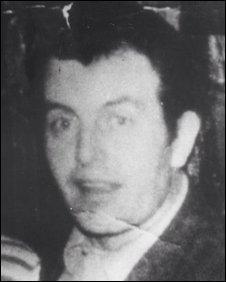
Patrick (Paddy) Doherty
Saville Report findings: Unarmed and unjustifiably shot by Soldier F.
Married father-of-six Patrick Doherty was 31 years old when he joined the march.
He worked in the city's Du Pont factory, and was an active member of the Northern Ireland Civil Rights Association. He had attended all their protests in the late 1960s and early 1970s and had been at the march in Magilligan the weekend before Bloody Sunday.
Mr Doherty died as he was trying to crawl to safety behind Rossville Flats.
The Saville Report said there was "no doubt" Mr Doherty was shot by Soldier F, who changed his story over the years.
In 1972, he said nothing about firing along a pedestrianised area by the flats, but later admitted doing so.
The report said he either fired knowing no-one in that area was a serious threat or he just did not care whether they were a threat.
The Saville inquiry heard that another man, Paddy Walsh, had risked his own life to try to save Mr Doherty.
He had crawled into the open, from a position of cover, to the injured man. Witnesses said he raised the head of the shot man and discovered that he was dead.
The Widgery Inquiry found the marcher's last moments had been filmed and he had not been armed.
"He was certainly hit from behind whilst crawling or crouching because the bullet entered his buttock and proceeded through his body almost parallel to the spine," said Widgery.
The Widgery Inquiry said if the soldier had shot Mr Doherty in the belief he had a pistol, that belief was "mistaken".
GERALD DONAGHEY
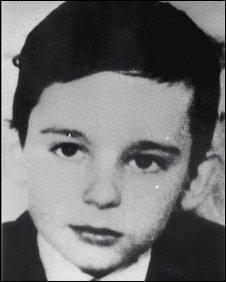
Gerald Donaghey
Saville Report findings: Probably armed with nailbombs but not a threat at the time that he was shot by Soldier G.
The 17-year-old from the Bogside was a member of the IRA's youth wing, Fianna na hEireann.
He had become involved in the civil unrest and had been jailed for six months for rioting the year before. The teenager was shot near to another victim, John Johnston, in Glenfada Park.
Mr Donaghey, fatally wounded, had been rushed to a military aid post where a medical officer pronounced him dead.
A police photograph taken shortly afterwards showed a nailbomb in Mr Donaghey's pocket. Another soldier later said he had found four nailbombs among Mr Donaghey's clothing.
Widgery dismissed claims that the devices had been planted after death - saying nobody had offered any evidence to the contrary.
But, the Saville inquiry heard that neither the soldier who first examined Mr Donaghey nor the army medical officer who received him at the aid post had found anything suspicious when they had checked over the teenager.
Another witness, a Sinn Fein councillor who at the time had been a member of the IRA's junior wing, also told Saville his friend had not been armed.
In conclusion, the Saville Report found the nailbombs were "probably" on Mr Donaghey but said he was not preparing to throw them at the time nor was he shot because he was carrying them.
It said he was shot by Soldier G in Abbey Park while trying to escape from the soldiers. A bullet first passed through fellow victim, Gerard McKinney, before mortally wounding Mr Donaghey.
The Saville Report said Soldier G, who falsely denied firing in the area, may not have been aware this had happened.
Widgery had concluded that Soldier G shot Mr Donaghey and that on the "balance of probability" the young man had been in a group that had not been acting aggressively when shots were fired "without justification".
However, he then went on to say that the teenager had probably been armed with nailbombs. That conclusion outraged the family who said it was based on planted evidence.
JOHN (JACKIE) DUDDY
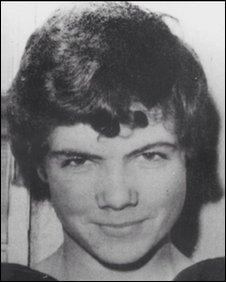
John (Jackie) Duddy
Saville Report findings: Unarmed and unjustifiably shot by Solider R.
One of a family of 15, the factory worker is thought to have been the first to be killed.
The 17-year-old boxer had represented his club in bouts across Ireland and in Liverpool. He had attended the march "for the craic" with his friends and against his father's advice.
He was running through Rossville car park beside Father (later Bishop) Edward Daly when he was shot.
A mural in the Bogside shows the churchman waving a white handkerchief as he attempts to ferry the wounded teenager to safety. He later administered the last rites.
"I can remember him holding my hand and squeezing it. I knelt beside him and said, 'Look son, we've got to get you out,' but he was dead."
The Saville Report concluded Mr Duddy was "probably" shot by Soldier R, as he ran away from soldiers.
The private claimed he shot a man who was about to throw a nailbomb but the report said it was most likely a stone in his hand.
The Widgery report said that the young man was shot by a bullet that entered his right shoulder and travelled through his body from right to left. It said he had not been armed and was probably hit by a bullet intended for someone else.
HUGH GILMOUR
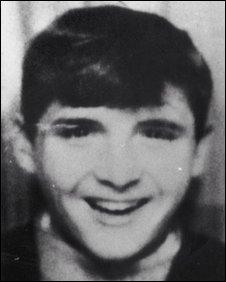
Hugh Gilmour
Saville Report findings: Unarmed and shot by Soldier U.
The 17-year-old from Rossville Flats was the youngest of eight children and a trainee tyre fitter.
He was shot on Rossville Street as he was running away from the soldiers in a crowd of up to 50 people. A woman who was with him said she heard him cry "I'm hit, I'm hit". A single bullet had struck him in the chest and arm.
The 17-year-old was pulled to safety behind the barricade near the entrance to Rossville Flats, but died shortly afterwards.
Witnesses, as well as a photograph of Hugh Gilmour taken seconds after he was hit, indicated that he was unarmed.
Saville said Soldier U fired at Mr Gilmour as he ran away from the soldiers and rejected the soldier's account he had fired at a man with a handgun.
The Widgery report concluded Mr Gilmour was not shot from behind and had probably been standing on a barricade when he was hit. He identified where the shot had come from, but not the soldier who pulled the trigger.
MICHAEL KELLY
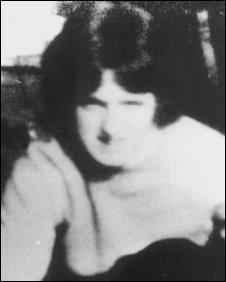
Michael Kelly
Saville Report findings: Unarmed and shot by Soldier F.
The 17-year-old had been training to be a sewing machine mechanic and the march was his first taste of the civil rights movement. He went, his family said, because his friends were going.
He was shot in the stomach near a barricade in front of Rossville Flats.
He was carried to the corner of Glenfada Park and a group of people including family took him to the safety of a house across the estate. He died before he reached hospital in an ambulance.
At Saville, Soldier F admitted that he had shot Michael Kelly - but said that he had only fired at people with bombs or weapons.
The report however found Soldier F killed Michael Kelly who was behind a rubble barricade in Rossville Street 80 yards away, despite him not posing a serious threat.
Widgery said the bullet entered Mr Kelly's abdomen and that meant he was not running away at the time. The bullet had been fired by Soldier F. The soldier said that he had fired at someone who was trying to throw a nailbomb.
The report said that the forensic tests found firearms residue on Mr Kelly's right cuff and that indicated he was close to someone who was firing at the soldiers from the barricade.
"But I do not think that this was Kelly, nor am I satisfied that he was throwing a bomb at the time when he was shot," said Widgery.
MICHAEL McDAID

Michael McDaid
Saville Report findings: Unarmed and shot by soldier P, J or E.
Twenty years old, he was the second youngest of a family of 12 and worked as a barman.
Mr McDaid was arrested but then escaped out of the back of an army vehicle before being shot near the barricade on Rossville Street.
A witness told the Saville inquiry that Mr McDaid was not carrying a weapon when he was shot. He was running away from the army vehicle and rubbing his eyes from the effects of the CS gas.
Saville concluded that shots in Rossville Street were fired by Soldier P, Soldier J and Soldier E, causing the deaths of Michael McDaid, as well as victims, William Nash and John Young.
It rejected claims Soldier P fired at a man with a pistol, Soldier J fired at a nail bomber and Soldier E fired at a man with a pistol in the Rossville Flats.
Widgery said that the bullet entered Mr McDaid's body through his left cheek, but he could not identify who had fired the shot. Forensic tests found lead particles on his jacket and right hand.
He concluded that the evidence was consistent with the dead man having been "in close proximity" to someone who had been firing. He discounted the possibility that the clothing and body had been contaminated by residue from soldiers or their vehicles.
KEVIN McELHINNEY
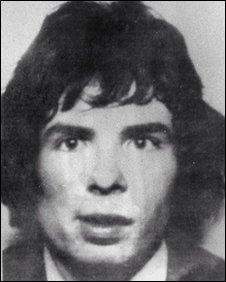
Kevin McElhinney
Saville Report findings: Unarmed and shot by Soldier L or M.
The 17-year-old was the middle child of five and was described as a hardworking supermarket employee.
He was shot as he tried to make his way to safety at Rossville Flats. Another man who was running from the soldiers said he turned and realised Kevin McElhinney was no longer behind him.
"Kevin was beside me for the few minutes before he was shot," he said. "At no time had he a nail bomb, gun or any other lethal weapon."
Saville said Soldier L or Soldier M shot and mortally wounded Mr McElhinney as he crawled away from the soldiers. It suggests they probably did so on the orders of senior officers.
At the inquiry, these soldiers and officers said two people, who may have both had rifles, were spotted crawling away from the barricade and were shot because they may have used the weapons once they had reached cover.
Saville concluded though the shots were not fired in fear or panic.
Widgery said the bullet had entered Mr McElhinney's buttock and that proved he had been shot from behind. The report said the firer was probably "Sergeant K".
"This senior NCO was a qualified marksman," said Widgery. "He described two men crawling from the barricade in the direction of the door of the flats and said that the rear man was carrying a rifle. He fired one aimed shot but could not say whether it hit. Sergeant K obviously acted with responsibility and restraint."
BERNARD McGUIGAN
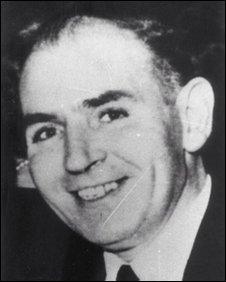
Bernard McGuigan
Saville Report findings: Unarmed and shot by Soldier F.
A 41-year-old married man with six children, Bernard McGuigan was a factory worker and handyman.
He was shot as he went to the aid of Patrick Doherty. Mr McGuigan was waving a white handkerchief as a single bullet struck the back of his head.
He fell to the ground at the corner of Rossville Flats, beside a 19-year-old member of the Order of Malta paramedics.
"He raised his hand in the air and shouted 'Don't shoot, don't shoot'. And seconds later he was just shot and landed in my lap."
Saville found there was "no doubt" Soldier F, who changed his story over the years, had shot Mr McGuigan.
In 1972, Soldier F, a Lance Corporal, said nothing about firing along a pedestrianised area by the flats, but later admitted doing so.
The report said he either fired knowing no-one in that area was a serious threat or he just did not care whether they were a threat.
Widgery heard that Mr McGuigan had deliberately left a position of cover to help the injured man. But he then said forensic tests had found lead residue on his hands and a scarf, consistent with the cloth having been wrapped around a revolver that had been fired.
His widow denied the scarf belonged to her husband, and Widgery concluded it was not possible to say whether Mr McGuigan was using or carrying a weapon.
GERARD McKINNEY

Gerard McKinney
Saville Report findings: Unarmed and shot by Soldier G
A father of eight children whose youngest was born eight days after his death on Bloody Sunday and named after him.
Mr McKinney managed a junior soccer team and ran the city's Ritz rollerskating rink.
The 35-year-old was shot in Glenfada Park as he tried to make his way to safety.
He was one of a number of people who was described as having made a run for cover and was behind Gerald Donaghey when he was shot.
The Saville Report concluded Soldier G, a private, shot Gerard McKinney. That bullet passed through him before mortally wounding 17-year-old Gerald Donaghey.
Saville rejected Soldier G's denial that he fired a shot and found, instead, he fired knowing Mr McKinney did not pose a threat.
Witnesses told the Widgery Inquiry that Gerard McKinney had raised his arms and shouted, "Don't shoot, don't shoot". He was shot once in the chest.
Widgery said his death was one of the most confusing episodes of the day. He said that forensic tests found no evidence that Mr McKinney had been handling weapons.
"The balance of probability suggests that at the time… the group of civilians [which included Mr McKinney] was not acting aggressively and that the shots were fired without justification."
WILLIAM McKINNEY
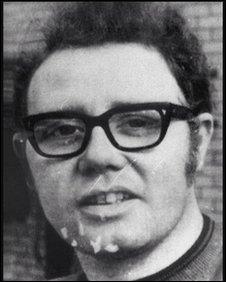
William McKinney
Saville Report findings: Unarmed and shot by Soldier E, F, G or H.
A printer at the Derry Journal newspaper, the 27-year-old was the oldest of 10 and was engaged to be married.
A keen amateur photographer, he often screened cartoons for his younger brothers and sisters and had set out to film the Bloody Sunday march on a camera he had received as a Christmas present.
He supported the civil rights campaign, and had been at the march the week before Bloody Sunday.
Like Gerald McKinney (no relation), he was in a group and was shot as he ran for cover at the entrance to Glenfada Park. Joe Mahon, who was beside him, was shot and injured.
"Willie was not a stone-thrower, a bomber or a gunman. He had gone to the civil rights march in the role of amateur photographer," said the newspaper's tribute to him.
"The death of such a man as Willie McKinney and the circumstances in which it occurred give the lie to the British army spokesman who, by attempting to condone the appalling events of Derry's Bloody Sunday, have demeaned the once proud title, 'officer and gentleman'."
Saville was unable to be sure who killed Mr McKinney, but said there were four soldiers who could have fired at him and another victim, Jim Wray. Up to five more people were injured by the same group. All four soldiers insisted they had shot at people carrying bombs or firearms - claims rejected by Saville.
Saville said Mr McKinney, who posed no great danger, was shot in the back.
The Widgery report put William McKinney's death in the same category as Gerald McKinney.
Both men had been shot without justification and there was no forensic evidence that he had handled firearms.
WILLIAM NASH

William Nash
Saville Report findings: Unarmed and shot by Soldier P, J or E.
The 19-year-old dock worker was the seventh of 13 children and the brother of Olympic boxer Charlie Nash.
William was shot in the chest near the Rossville Street barricade. Alexander Nash saw his son being shot and went to help him, and was then shot himself.
Widgery said that Mr Nash had been shot at almost the same moment as John Young and Michael McDaid.
"The bullet entered his chest from the front and particles of lead were detected on the web, back and palm of his left hand with a distribution consistent with his having used a firearm."
Soldier P told Widgery that he had returned fire after a man consistent with Mr Nash's description had fired first.
"In view of the site of the injury it is possible that Soldier P has given an accurate account of the death of Nash," said the report.
Saville concluded that shots in Rossville Street were fired by Soldier P, Soldier J and Soldier E, causing the deaths of William Nash, as well as victims Michael McDaid and John Young.
It rejected claims that the three soldiers fired because the men were armed.
JAMES WRAY
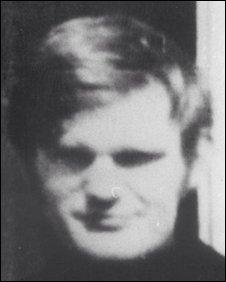
James Wray
Saville Report findings: Unarmed and shot by Soldier E, F, G or H.
The 22-year-old had worked in England for some time and was engaged to an English girl.
Friends said he was outgoing and worked in a city bar and dancehall at weekends. His entire family had attended the march after going to Mass together.
Mr Wray's death, like that of Gerald McKinney and William McKinney, happened during the chaos at Glenfada Park as people ran for cover.
Mr Wray was shot twice, across his body and in his back. Two witnesses said he was lying on the ground wounded when he received the fatal shot.
Saville was unable to be sure who killed Mr Wray, but said there were four soldiers who could have fired at him and William McKinney. All four soldiers insisted they had shot at people carrying bombs or firearms - claims rejected by Saville.
Saville said Mr Wray, who posed no great danger, was shot twice in the back.
The second shot was probably fired as he lay mortally wounded in the park, said Saville, meaning there could have been "no possible justification".
Widgery said there was no photographic evidence of what had happened to Mr Wray, but he had been in the general vicinity of where soldiers claimed that civilians had opened fired.
He also said the young man had been shot by Soldier E, F, G or H, but it was impossible to say who.
Widgery said forensic evidence was "consistent" with the young man having used a firearm - but evidence also suggested he had not been acting aggressively when he was shot.
JOHN YOUNG
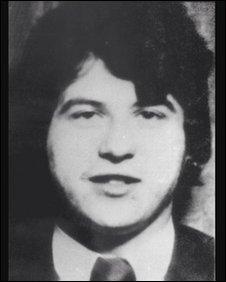
John Young
Saville Report findings: Unarmed and shot by P, J or E
The 17-year-old from Creggan was the youngest of six and worked in a menswear shop.
He was shot near the barricade on Rossville Street as he tried to take cover near the flats. One witness told Widgery that Mr Young had gone to help another teenager who had been shot.
"A young fellow of 16 or 17 was shot and fell in front of me... as we went forward to help him, automatic fire riddled the rubble.
"Everyone lay flat out on the ground, about four stayed on for a minute and during this time soldiers were still shooting and we could hear the bullets above our heads.
"About a minute later John Young crawled with his head down towards the boy who had been hit. He got to within a yard of him when a single shot hit him - he was dead."
Widgery said: "Young was undoubtedly associated with the youths who were throwing missiles at the soldiers from the barricade and the track of the bullet suggests that he was facing the soldiers at the time. It is not possible to identify the particular soldier who shot Young."
He said the forensic evidence was consistent with Mr Young having fired a gun.
Saville concluded John Young lost his life in the Rossville Street shooting, alongside William Nash and Michael McDaid.
The soldiers' claims that the three of them had been armed were rejected. Instead, Saville found the soldiers fired knowing there was no threat or not caring whether there was one.
JOHN JOHNSTON
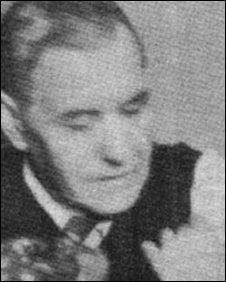
John Johnston
Saville Report findings: Shot while unarmed.
Mr Johnston was a married 59-year-old draper and a keen supporter of the civil rights movement.
His family described him as a well-dressed man who was quiet by nature, but also someone who attended as many of the civil rights marches as he could.
Mr Johnston was in William Street when he was one of the first people to be shot on the day.
He was taken to hospital and was believed to have recovered when he was discharged.
However, he was later readmitted to hospital and died from a brain tumour in June 1972, after the Widgery report was published.
His family believe that his death was caused by a head injury he sustained when he fell onto the footpath after being shot.
Saville said Mr Johnston was hit accidentally from fragments of shots fired at another marcher, Damien Donaghey, in William Street but added that his death was "not the result of any of the wounds he sustained on Bloody Sunday."
Clarification 13 March 2019: This story was amended to make clear the Saville Report's finding about John Johnston's death.